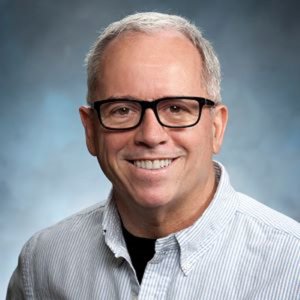Presented By: Michigan Institute for Plasma Science and Engineering (MIPSE)
CANCELED: MIPSE Seminar | Quantum Hydrodynamics and Warm Dense Matter
Dr. Frank Graziani, Lawrence Livermore National Lab

Abstract:
The experimental and computational investigation of both equilibrium and non-equilibrium strongly coupled systems with partially or fully degenerate electrons is an intellectu-ally stimulating and scientifically challenging problem. Warm dense matter (WDM) is of particular interest since it “exists in the lower-temperature portion of the high energy density (HED) regime, under conditions where the assumptions of both condensed-matter theory and ideal-plasma theory break down, and where quantum mechanics, particle correlations, and electric forces are all important.” [FESAC 2009]. Interiors of giant planets, brown dwarfs, and neutron star envelopes are all examples of WDM. A wide variety of theoretical methods have been developed and are in routine use for studying warm dense matter. This includes density functional theory, time-dependent density functional theory, and quantum kinetic theory. Recently, there has been a resurgence in interest in using a “simpler” approach to investigating WDM based on quantum hydrodynamics. Quantum Hydrodynamics (QHD) has a long and interesting history, dating back to the first developments by Madelung and Bohm. In this talk, we discuss the historical and recent developments in QHD as applied to quantum many-body systems relevant to HED regimes. Recent work involving adding a QHD capability to the radiation hydrodynamics code MIRANDA will be discussed with applications to the electron gas.
About the speaker:
Frank Graziani received a BS in physics from Santa Clara U., and a PhD in physics from UCLA. He was a postdoctoral fellow at U. Colorado and U. Minnesota working in cosmology and particle physics; and worked with NASA on exoplanet dynamics and star formation. Dr. Graziani joined Lawrence Livermore National Lab. in 1989 where he works in radiation transport and plasma physics. He has held many leadership positions at LLNL, including code project lead, group leader, V&V Leader, PI for LDRD-Strategic Initiatives, lead for the National Boost Initiative and Assoc. Division Leader for computational physics. He now directs the High Energy Density Sciences Center. He has won four DOE Defense Program Awards of Excellence, the LLNL Director’s S&T Award and is a Distinguished Member of the Technical Staff. His research interests include the micro-physics of dense plasmas and HED education. Dr. Graziani is editor of two books on computational methods and a book on WDM physics.
The experimental and computational investigation of both equilibrium and non-equilibrium strongly coupled systems with partially or fully degenerate electrons is an intellectu-ally stimulating and scientifically challenging problem. Warm dense matter (WDM) is of particular interest since it “exists in the lower-temperature portion of the high energy density (HED) regime, under conditions where the assumptions of both condensed-matter theory and ideal-plasma theory break down, and where quantum mechanics, particle correlations, and electric forces are all important.” [FESAC 2009]. Interiors of giant planets, brown dwarfs, and neutron star envelopes are all examples of WDM. A wide variety of theoretical methods have been developed and are in routine use for studying warm dense matter. This includes density functional theory, time-dependent density functional theory, and quantum kinetic theory. Recently, there has been a resurgence in interest in using a “simpler” approach to investigating WDM based on quantum hydrodynamics. Quantum Hydrodynamics (QHD) has a long and interesting history, dating back to the first developments by Madelung and Bohm. In this talk, we discuss the historical and recent developments in QHD as applied to quantum many-body systems relevant to HED regimes. Recent work involving adding a QHD capability to the radiation hydrodynamics code MIRANDA will be discussed with applications to the electron gas.
About the speaker:
Frank Graziani received a BS in physics from Santa Clara U., and a PhD in physics from UCLA. He was a postdoctoral fellow at U. Colorado and U. Minnesota working in cosmology and particle physics; and worked with NASA on exoplanet dynamics and star formation. Dr. Graziani joined Lawrence Livermore National Lab. in 1989 where he works in radiation transport and plasma physics. He has held many leadership positions at LLNL, including code project lead, group leader, V&V Leader, PI for LDRD-Strategic Initiatives, lead for the National Boost Initiative and Assoc. Division Leader for computational physics. He now directs the High Energy Density Sciences Center. He has won four DOE Defense Program Awards of Excellence, the LLNL Director’s S&T Award and is a Distinguished Member of the Technical Staff. His research interests include the micro-physics of dense plasmas and HED education. Dr. Graziani is editor of two books on computational methods and a book on WDM physics.